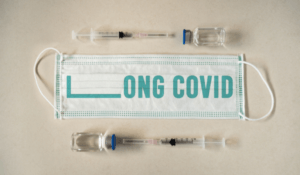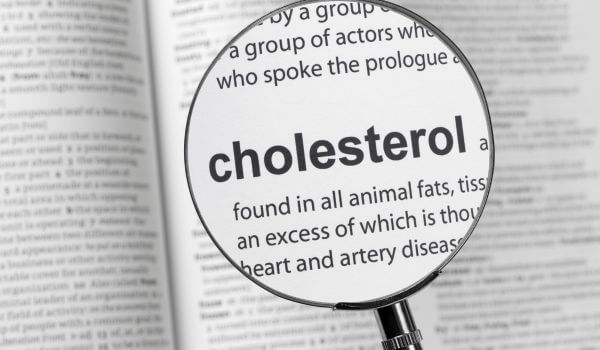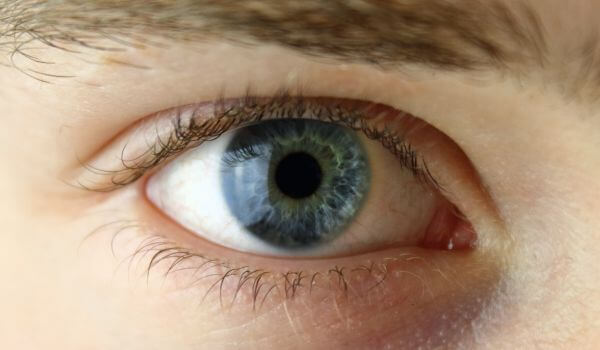 The first time I got infected by COVID-19 was in 2022. I had managed to get through the earlier waves of the pandemic in good shape, having followed all the advice for isolation, masking, and social distancing. By then, we thought we knew so much about the virus after three years into the pandemic that we had grown skilled enough to beat it. In addition, I was fully vaccinated. But to rub some salt into the wound when I did get infected, it landed me in hospital in the middle of winter, on Christmas Day.
The first time I got infected by COVID-19 was in 2022. I had managed to get through the earlier waves of the pandemic in good shape, having followed all the advice for isolation, masking, and social distancing. By then, we thought we knew so much about the virus after three years into the pandemic that we had grown skilled enough to beat it. In addition, I was fully vaccinated. But to rub some salt into the wound when I did get infected, it landed me in hospital in the middle of winter, on Christmas Day.
My symptoms started shortly after one of my kids tested positive without any outward signs. Still, I started to feel sick a few days later. It followed the expected pattern with a mild temperature, a cough, and a general malaise. But there was a dramatic deterioration a few days in, with feelings of nausea along with a racing heartbeat. I was feeling sick enough to call for help.
Being the holidays, no doctor was readily available in our neighborhood, so I hauled myself off to the emergency room. They checked my heart and found nothing wrong. By that time, I was growing a bit concerned because my symptoms were getting progressively worse. I asked whether I was eligible for anti-viral drugs. They replied that I didn’t fall inside a group of people most likely to benefit. (The Federal government’s Center for Disease Control sets the rules for qualifying for treatments with anti-virals like Paxlovid as being for people who are at least 50 years of age, preferring people who are 65 and older or having underlying medical conditions, such as heart disease, obesity, a weakened immune system, diabetes, or chronic lung disease, regardless of the age.) Given that my age at the time was 48, and I was lucky enough not to be suffering any of those conditions, the best advice the hospital doctor could give me was to go home, with the expectation that these symptoms would lift.
Two weeks later, I finally tested negative for COVID-19. However, there were still persistent symptoms like nausea and being unable to do any physical exertion without becoming dizzy. The first clue I got that I may have been struck by what has become known as the “curse of Long COVID” came mainly from my growing forgetfulness and confusion – the dreaded “brain fog.”
What is Long COVID
It turns out that I am far from being alone. It is estimated that one-in-ten people who contract COVID-19 develop Long COVID. The Department of Health and Human Services (HHS) developed a definition of Long COVID in collaboration with CDC and other partners. “The signs, symptoms, and conditions are present four weeks or more after the initial phase of infection; may be multisystemic; and may present with a relapsing-remitting pattern and progression or worsen over time, with the possibility of severe and life-threatening events even months or years after infection. Long COVID is not one condition. It represents many potentially overlapping entities, likely with different biological causes and different sets of risk factors and outcomes.”
People call Long COVID by many names, including post-COVID conditions, long-haul COVID, post-acute COVID-19, long-term effects of COVID, and chronic COVID. The scientific term is “post-acute sequelae of SARS CoV-2 infection (PASC)”.
More than two hundred different symptoms are now ascribed to Long COVID. Professor Steven Faux co-founded one of the first Long COVID clinics in the world and has written a book titled “Long COVID: Expert Advice, from Diagnosis to Treatment and Recovery.” According to Prof. Faux, the most common are:
- extreme tiredness (fatigue)
- breathlessness
- insomnia
- difficulty waking with joint pain and muscle aches
- anxiety and/or depression
- brain fog – problems with memory and concentration
- muscle pain
- heart palpitations
- headaches
- a loss of taste and smell.
Who gets Long COVID?
According to research published in 2023, nearly 7% of adults in the US have experienced Long COVID symptoms for 3 or more months. No national registry keeps tabs on the number of cases, so most of the numbers can be quoted from a limited amount of studies.
What is clear from data collected globally since the pandemic began is that Long COVID affects more women than men, and this is especially true for women in their late thirties and forties. Although scientists and physicians have had more than four years to come to grips with it, there are only hints coming out now as to why more women get Long COVID than men and why that age group stands out.
A few of the possible causes cited by Prof. Faux in his book are:
- The immune dysregulation theory: The immune system is out of kilter and is acting as if the SARS-CoV-2 infection is still in the body.
- The micro-clot theory: The ‘stickiness’ of the blood has increased. Cells that line blood vessels are inflamed so that small blood clots may form in some organs, triggering the symptoms.
- The autoimmune theory: Long COVID might be an autoimmune disease in which antibodies target normal tissues, including organ systems and the gut lining.
- The neuro-inflammation theory: The COVID-19 infection results in inflammation in the brain and nervous system. This causes the misfiring of nerves, leading to poor concentration, loss of nervous control of the heart rate, and pain.
- The microbiome theory: The COVID-19 infection causes an imbalance in the microorganisms that normally live in our intestine (the gut flora), leading to changes in the body’s ability to absorb certain proteins. This can also lead to symptoms such as brain fog or fatigue and possibly worsen the impact on the immune system.
Is there a gender bias in Long COVID?
This is one of the most mysterious aspects of Long COVID. While the most serious cases of the original COVID-19 infection, especially those needing to be hospitalized, tended to be predominately males over 50, those suffering from Long COVID are both primarily younger and overwhelmingly female, outnumbering men by four to one. This bias is supported by statistics from all over the world. According to the British Medical Journal, “…women have a higher risk of experiencing a range of debilitating ongoing symptoms, such as fatigue, breathlessness, muscle pain, anxiety, depression, and brain fog after hospital treatment for COVID-19….and symptoms were more prevalent in women aged 40-60.”
A meta-analysis and review of multiple studies into the possible causes of Long COVID pinpointed gender and the severity of the original COVID-19 symptoms as primary risk factors for Long COVID. It was found that there is an increased occurrence of Long COVID among women around 50 years of age (considering the median age of menopause as 51 years.) It suggests a potential link between symptoms of perimenopause and Long COVID. Perimenopause could be misdiagnosed as Long COVID and vice versa, or these two conditions might mutually influence each other.
As women enter perimenopause, their ovaries may become more susceptible to conditions such as COVID-19 and stress. There is a hypothesis that suggests COVID-19 may have an impact on hormone function, resulting in decreased ovarian reserve irregularities in the cycle, disruptions in gonadal function as well as the worsening of symptoms during menstruation. The virus could influence hormone production due to its prevalence.
One fascinating thought comes from Prof. Akiko Iwasaki, an immunologist at Yale School of Medicine. She is researching a theory that women in their childbearing years are believed to exhibit a more responsive immune reaction to infections due to having two X chromosomes. The genes responsible for various parts of the immune system are predominantly found on the X chromosome, resulting in a stronger expression of diverse immune responses in women.
This phenomenon is also associated with the pregnancy compensation hypothesis, which proposes that women of reproductive age have heightened immune responses when encountering pathogens, as their immune systems have evolved to provide increased protection during pregnancy.
While this heightened robust immune response is thought to contribute to lower mortality rates from COVID-19 among women during the acute phase of infection, it comes with a downside. A leading theory on Long COVID suggests that remnants of the virus can persist in various tissues throughout the body for months, from the brain to the kidneys, forming reservoirs. So, due to women’s heightened response to viral presence, some researchers speculate that these viral reservoirs may be more likely to trigger prolonged inflammation across the body, leading to symptoms like pain, fatigue, and cognitive impairment commonly seen in individuals suffering from Long COVID.
Studies on chronic Lyme Disease have shown evidence that the bacterium Borrelia burgdorferi, the culprit behind Lyme Disease, can burrow into tissues and nerves, lingering in the body and causing persistent symptoms. Research indicates that women exhibit a more robust reaction to the bacterium, generating higher levels of inflammatory cytokines than men.
There is a growing body of evidence suggesting that women may react differently to prolonged low-grade infections, making them more susceptible to chronic inflammation. This trend has also been observed in Myalgic Encephalomyelitis/Chronic Fatigue Syndrome (ME/CFS) studies. Female patients are more prone to autoimmune-related conditions, such as new allergies, muscle stiffness, and joint pain – symptoms akin to those seen in many individuals with long-term effects of COVID-19.
Why is it so hard to explain Long COVID to others?
Prof. Steven Faux writes that one of the things about Long COVID is that it’s a largely invisible illness. When you have it, you don’t necessarily look any different. The symptoms it brings, like fatigue or cognitive impairment, are largely subjective; it’s hard to show people you are fatigued because the only way to do that is to complain about the symptoms.
What’s the path to recovery from Long Covid?
Sadly, there’s not a lot to report. Early in the pandemic, the Federal government pledged upwards of a billion dollars to its “Researching COVID to Enhance Recovery (RECOVER)” project, cited as a research initiative seeking to understand and prevent Long COVID. That website publishes information about many seminars held nationwide for physicians, epidemiologists, and scientists delving into the mechanisms of Long COVID. Still, so far, nothing has come out for the general public to read and learn from, and most importantly, nothing in the way of a plan for treating the millions of people who are suffering and the millions more who are at risk of slipping from infection by COVID-19 virus into the chronic condition of Long COVID.
Perhaps the only advice I have been able to get and pass on to my friends and family is that it’s still best to avoid becoming a victim of COVID-19 rather than trying to overcome its effects once infected. The old saying “prevention is better than cure” could never be more appropriate. The older guidelines that emerged when the pandemic struck still represent the best course of action. Where possible, avoid contact with people who may be carriers. Where this is not possible, carry the Enovid “hand sanitizer for the nose” that creates a physical and chemical barrier of antimicrobial nitric oxide. Use it when you may be exposed to other infected people, for example, on public transportation, in health care settings, daycares, shopping centers, sports events, etc.
















